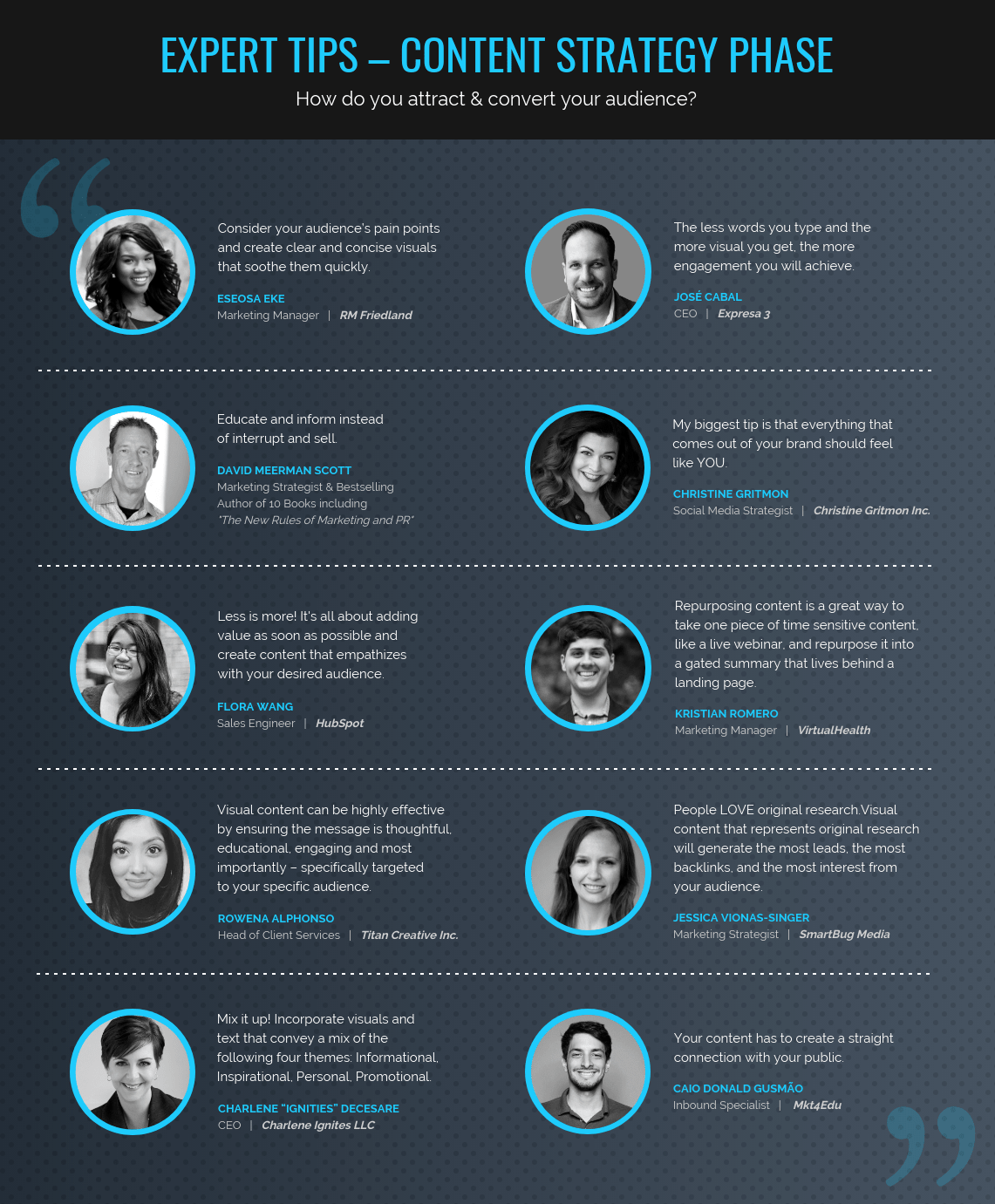Do you know where your last lead came from? While the basics of lead generation remain the same, new technology and methodologies are changing the way agencies gather leads for their clients and forcing them to assess their own lead generation strategies. With the market saturated, marketers are doubling their efforts at measuring the success of their lead generation campaigns to create processes that they know work for them and their audience.
Whether your leads are coming from content marketing, organic traffic, paid traffic, or referrals it’s important to track them at the source to help shape your future campaigns.
On top of building fresh and unique strategies for their clients, agencies have the added pressure of finding their own leads.
Here’s how 19 top digital agencies and makers craft their lead generation strategies for themselves and their clients and, more importantly, how they measure the success of their efforts.
Dauntless Agency
At Dauntless Agency, they don’t need to run lead generation campaigns because 100% of their leads are referral based, but that doesn’t mean they don’t need to measure internal key performance indicators (KPI) to track growth.
“We measure the total impact versus our growth curve. Our clients are large, and we’re not a traditional agency,” explains Josh Chesney, CEO of Dauntless Agency. Our campaigns for our clients are more of a digital transform at the enterprise level. We create internal and external platforms to help optimize and restructure their marketing campaigns so that the business can market itself and become more profitable.”
WebDigital
For the past 2 or 3 years, WebDigital has generated nearly all of their leads via referrals from current and past clients, but, as a digital agency, they continue to run lead generation campaigns for their clients.
“To help them generate leads we use a combination of Google AdWords and Facebook Ad Campaigns,” explains Mihai Alexandru Andrei of WebDigital. “To generate leads for ourselves is a little more complex than for our clients because we have multiple tactics that we apply including Google Adwords and Facebook ads for ourselves, and articles in different publications in Romania for our clients.”
They’ve found direct marketing to be the most successful for them, but different moments in agency life require different marketing tactics to work well, making it essential to recognize that what works now might not necessarily work long-term or in the future.
The Participation Agency
The Participation Agency doesn’t use a lot of technology when it comes to generating their leads. Instead, they look for brands that align with them and use old-school techniques like phone calls and meetings to build those relationships.
“We are very into targeted networking,” says Ruthie Schulder, Co-Founder and President of the Participation Agency. “Mostly what we do is roll out platforms that become a calling card for the agency.”
Concerning projects, they track metrics via impressions, product feedback, their product in the hands of consumers, and what products are more successful and revenue-driven to determine success.
Community Agency

Danielle Perras, Communications Specialist at Community Agency, recognizes that there’s no one way to generate leads that performs definitively above all the rest. At least not at their agency.
“We’re midsize, so we don’t do traditional SEO. We create organic traffic by updating our website and posting on Instagram to showcase our creative process and the final product,” says Danielle. “But we don’t overly brand ourselves. We may run paid ads once in a while, but we grow our company through word of mouth, winning awards, publishing articles, and building on referrals.”
Community Agency emphasizes the idea that all of their efforts work together to help show off the different types of thinking they’re able to bring to the table. They pride themselves in approaching things in a holistic creative manner and not by using a cookie-cutter strategy that they expect to work every time.
Street Toolz
As with most campaigns, Street Toolz creates lead generation strategies that are specifically tailored for their clients and dependent on the type of campaign they are running. For their own services, it’s the same ball game.
“When you work with a diversity of clients, it’s difficult to pin down the most successful techniques,” says Elcee McEdwards, CCO at Street Toolz. “It’s usually a combination of different strategies, ranging from A/B testing to remarketing, to using ads to target competitors customers.”
With any campaign, trial and error must exist to find out what works and what doesn’t. Every client and every agency will have its own challenges reaching its audience, and taking a fresh and holistic look at each campaign is key to finding success for themselves and their clients.
Nuanced Media
You can try to identify the approach for lead generation before beginning research, but in a world as competitive as digital marketing, the research component is key to finding top opportunities, according to Ryan Flannagan, CEO at Nuanced Media.
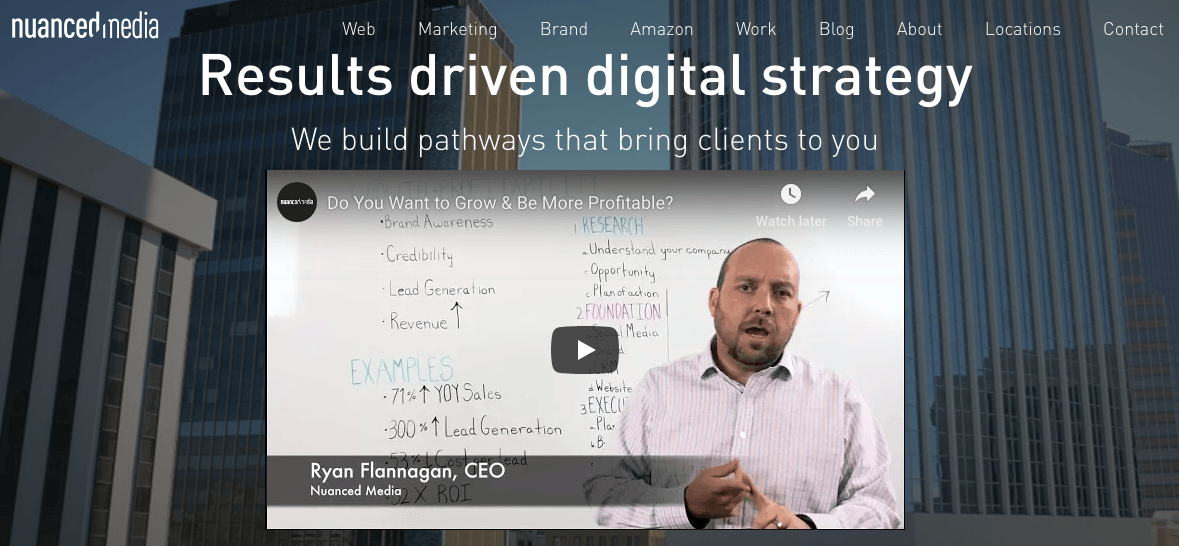
“For growth and profitability, you have to look at [the] whole sales funnel; from attraction to lead generation to repeat customers,” says Ryan. “If you do that well, and create valuable content that addresses your audience’s pains points and nurtures them over time, they’ll start to see you as a thought leader that they want to do business with.”
Ryan agrees that measuring success in lead-generation campaigns depends on the type of client and the type of campaign.
“In B2B campaigns we can easily find an existing prospect list and start targeting them top of the funnel on social media, then we start reaching out with value ad pieces,” adds Ryan. “From that point then we continue to give them value and nurture the lead until we close and can call it a win.”
Index
Like most agencies, Index practices lead generation for themselves as well as for their clients. Regarding their own lead generation, they first segment the target into personas, defined as either influencers or decision makers.
“Each person will have his own campaign, which is based on a multi-channel approach, meaning we will try to reach each persona on a multitude of sources,” says Jeremy Easterbrook, President of Research and Development at Index. “Those sources being defined as the channel(s) or the platform(s) where the persona will be reached in the first place, then we will bring this persona/prospect down our conversion funnel toward the ultimate conversion, in our case a form of a call or a form sent to us, which is then picked up by the sales department.”
They separate their multi-channel approach into two kinds of campaigns: notoriety and acquisition. Facebook, for instance, will be used more as a notoriety channel; Google AdWords and website optimization will be used to generate organic traffic.
To determine the success of their methods, they look at the metrics of each channel, often finding that people coming from organic sources (the result of their SEO efforts) tend to have a more prolonged engagement on the site and end up converting at a higher rate.
While it’s the most successful strategy regarding channels, they know they can’t rely on only one source and need to use a mix-marketing approach. Even though a client can come organically, they remain aware that most visitors will convert only after 5 or 6 visits.
“Indeed, sometimes the original visit will come from organic but we will retarget visitors on Facebook for instance, and it will only be after few times of touching points with them, that they will finally convert. It has to be a mix-marketing approach to get a good conversion rate overall,” adds Jeremy.
Yes Marketing
Yes has a lead-generation strategy that is almost entirely rooted in content that’s informed by their experience in marketing and by their history of helping their clients.
“We believe in providing something of value to our prospects and clients in exchange for their information — strategic guides, data reports, design lookbooks, industry case studies, and much more,” shares Ivy Shtereva, Vice President of Marketing at Yes.
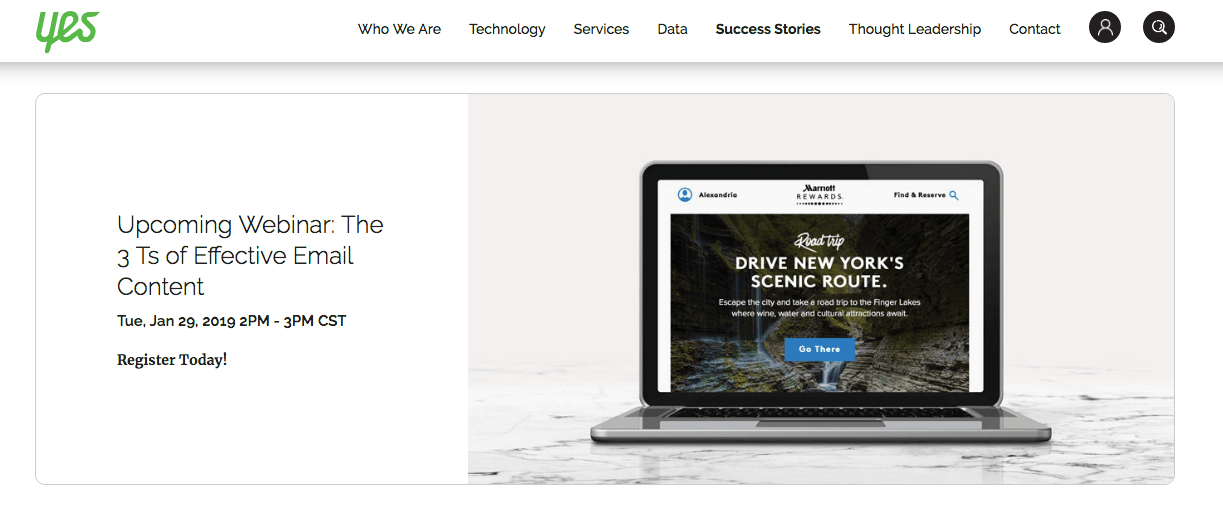
They’ve found content marketing to be their most useful source of lead-generation success. Because they have established themselves as industry thought leaders, they can follow up without clients feeling taken advantage of. Most other strategies involve more of an inorganic stream of communication and content marketing bridges that disconnect very effectively.
Rhythm Agency
When working on a campaign for Acura, Rhythm Agency put their efforts into creating video ads to generate leads. They then tried to raise awareness of the campaign by implementing a sales funnel. The journey of the funnel included using YouTube ad campaigns, video content on YouTube, and a keyword strategy that was optimized to bring up videos in the right searches.
“When we sit down with a client, it starts with business goals and what pieces are going to help meet goals,” explains Kristin Bush, Director of Marketing at Rhythm Agency. “Then we make sure they have the infrastructure, which is a crucial component for us to ensure success.”
It’s also important to note that, while they’ve found success using videos to generate leads, having dedicated landing pages tied to emails is the most successful strategy for many clients.
“Email not going away,” says Kristin. “It’s still the most cost-effective, delivers most results, and gives brands messages their audience wants to hear.”
Email is also a tried-and-true way to get prospective customers into the funnel and nurtured into a future sale.
BFG
With a lead-generation strategy primarily driven by existing relationships and category and discipline expertise, creative agency BFG focuses on areas that they know they excel in.
“We’re working on differentiating ourselves and position creativity as our secret weapon,” says Scott Seymour, Chief Creative Officer and VP at BFG. “We can show clients how to create a fresh approach to business and inspire them around what’s possible by activating their leads through specific opportunities and focusing on one area.”
When working with creative clients who want to build an audience of other creatives, it becomes a test in speaking the same language as the leads you’re targeting. Creative minds will not respond to the same strategies as those of more traditional markets; therefore agencies with these targets need to follow a different approach that appeals to their interests.
Advantage
There are a lot of ways to engage people online. At Advantage, they believe that consumer passion is what fuels the entire process of connecting with an audience.
“As an agency, we are in the sponsorship and brand-experience arena,” explains Tom Haidinger, President of Advantage. “That means we help our clients achieve their goals (usually lead generation) using the currency of consumer passions.”
Their breakthrough in what they do for their clients is to resonate with consumers–whether the general public or in a B2B setting–by holding conferences, thought-leadership seminars, or other onsite events that create engagement and promote passion as their priority.
“For lead generation, when you get past the semantics and engagement, we find an integrated approach serves the purpose, surrounding the consumer with multiple touch points,” says Tom.
TPG – The Pedowitz Group
When approaching a new lead-generation campaign, the Pedowitz Group tends to work backward from business goals.
“We first look at what is the total revenue at any given moment and work back coming from there versus starting from scratch to find new ways to acquire leads,” explains Kevin Joyce, VP of Strategy Services at the Pedowitz Group. “Working our way from the bottom of [the] funnel lets us more easily align ourselves with the overall strategy of the company we’re working with.”
They’ve found that while working backward is useful, there’s no one way to find success in these types of campaigns.
For existing customers of a client, focusing on creating upsells to nurture the leads, along with content to promote thought leadership, like webinars, catches prospects in their buying journey and allows them to monitor customer behavior to use as research for future campaigns.
AND Agency
At AND Agency, their team uses a software package that can help manage the process in terms of cold leads, but the remainder of their new business comes almost exclusively from referrals and word-of-mouth.
“Since we work on large projects with large organizations, credibility has significant meaning. We rely on our word-of-mouth leads since our existing customers can vouch for our credibility and reliability,” says Adam Kamieniak, President and CEO at AND Agency.
To measure the success of their campaigns, AND uses Salesforce, which they believe to be an industry standard in real-time reporting and monitoring what’s coming down the pipeline.
Feature Space
Feature Space, a software firm that solves payment problems for companies and banks, finds the most successful and qualified leads come directly from their customers.
“When someone needs a solution like ours, it’s usually a long process, and important decision making goes into choosing to use a solution like ours. That choice isn’t made lightly, so knowing other customers had a good experience helps guide people in our direction,” says Michael Touchton, Marketing Manager at Feature Space.
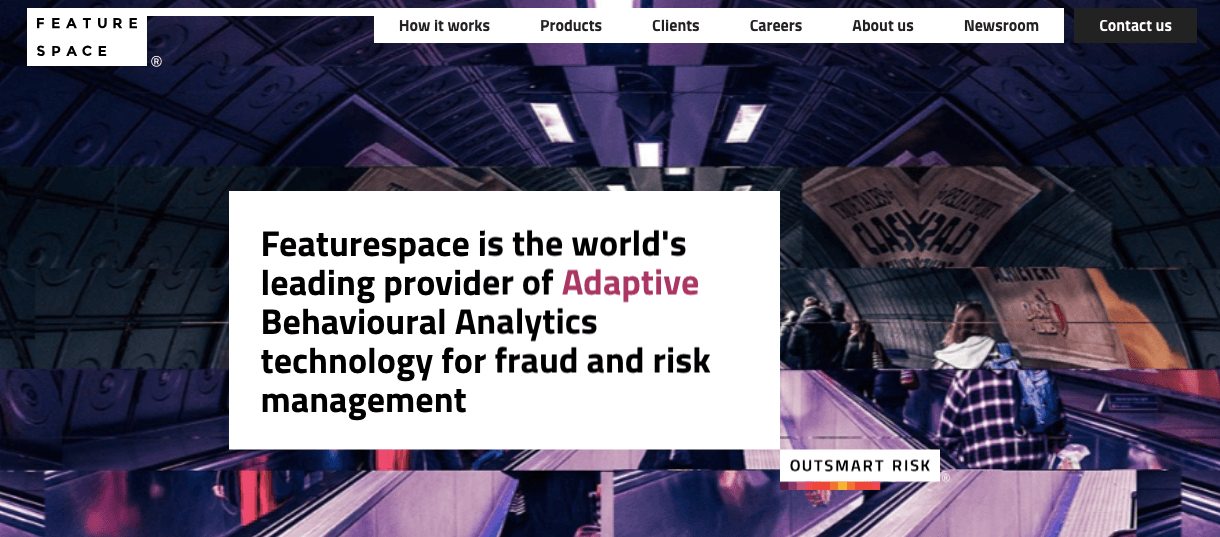
Feature Space has also come up with their own solutions for tracking leads. When leads come through, they trace the source and identify what opportunities exist to monitor and measure the ROI.
Finally, establishing a culture of excellence might sound like a stretch, but carefully aligning employee growth with their mission to take a service-based approach in delighting their clients, en route to providing the most robust fraud-prevention software, has been fundamental in winning new business.
What3Words
What3Words is a small startup making it easy to talk about location by dividing the world into 3m by 3m squares to identify an exact location. Because they are small, they concentrate their efforts on trying to scale by working with partners like delivery companies, post offices, and food delivery, and by assisting with aid and humanitarian efforts (which the company has committed to provide at no charge).
The adoption rates of partners and customers of partners are the primary measure of the success of their campaigns, according to Giles Jones, Chief Marketing Officer at What3Words.
“W3W prides itself on using 20% of their marketing budget on marketing innovation,” says Giles. “The team is willing to try any experiment; see what works; take risks. It keeps their marketing fun and always innovating to try new methods.”
Pixel Union
At Pixel Union, they’re putting a lot of effort into cross-promotion–more than they’ve ever done in the past.
“As theme developers, we’ve always had a lot of products to sell, but the cross-selling opportunities are limited since you can’t use two themes at once,” says Hal Williams, Marketing Manager at Pixel Union. “That’s even more true in e-commerce, where there’s so much at stake when it comes to overhauling the look and feel of your online store.”
Because they started making apps in addition to themes, they suddenly have a range of products that merchants can use in concert to increase customer engagement and sales, making it a bit easier to measure the success of their products.
Whereas before they focused on individual product marketing, the results of their cross-promotion efforts are what will take them to the next level. As a platform partner, they’ve found a lot of success partnering with great companies like Shopify and BigCommerce and, in addition, they now have large communities of users that they can leverage as brand ambassadors who will act as a marketing team.
They use lifetime value (LTV) to measure the success of their efforts. By increasing the number of Pixel Union products a merchant uses, they effectively increase LTV. With apps, this measure becomes more of a product metric, since it’s incumbent upon the product and merchant success teams to provide a great experience and keep that customer. Therefore, they look more at acquisition metrics–the total number of products a merchant is using.
“Our goal is to help merchants sell more and become integral to their success. If we can do this by creating and promoting an ecosystem of tools and resources–not only our products but our partners’ products, too–I think we’ve positioned ourselves for big things,” says Hal.
Plutora
This year, Plutora is doubling down on their account based marketing strategies and integrated a set of campaigns designed to bring inbound and outbound marketing techniques together.
“Our accounts and persona strategy started to incorporate old-school techniques that were used 5 to 10 years ago,” explained Bob Davis, Chief Marketing Officer at Plutora. “We would see direct mail, an old-fashioned technique, starting to become in vogue again and working nicely.”
Plutora measures the success of their campaigns by tracking KPIs but ultimately considers the prime measure of success to be the return on investment (ROI) of their marketing efforts. Rather than sales, they think in terms of partnerships. They monitor each campaign on ROI and optimize and refine as they go to drive up that number.
“In our market, we have a tremendous maturing going on, so people are looking for solutions we offer. The awareness level of what we do, and the competition, is on the rise” adds Bob, “it just reasons that if we show up more, we get invited to the party, so we win a lot more than we lose right now. It’s about the shared pocketbook.”
Livity
Felix Morgan, head of strategy at youth-led creative network Livity, says “Before the internet, people bought into social tribes–punks, hippies, mods, rockers, etc. This influenced how they experienced culture, but also how they saw themselves. However, when a tribe embeds itself that deeply in your identity, it becomes difficult to shift, so behaviors have to be solved with hard interventions at the point of action. Now, thanks to the internet, culture (and the ways people consume it) is more fragmented than ever. People no longer subscribe to tribes, and instead consume multiple streams simultaneously.”
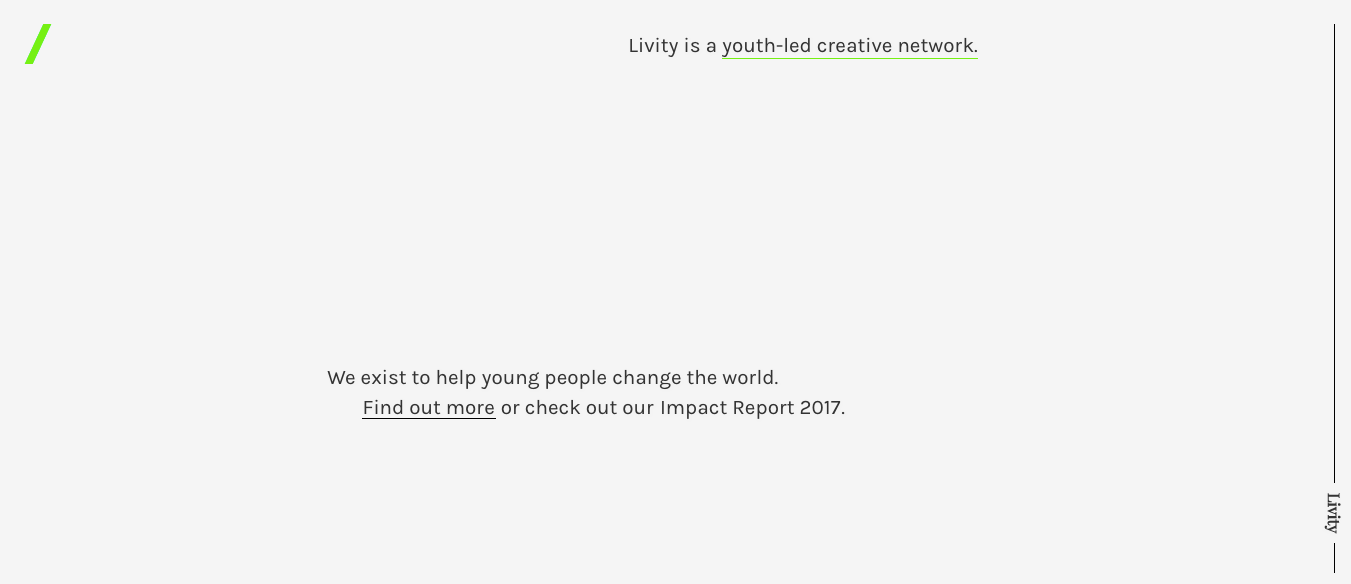
Felix explains that this has led to identity being increasingly fragmented–especially in young people, who often balance multiple views that are in cognitive dissonance. This makes their identity and, in turn, their habits far more fluid and malleable.
“Given habits are so heavily influenced by identity, and very fluid cultural changes inform identity, in 2019 we will be pioneering a new model for habit change, built around understanding your audience as a person rather than a consumer, creating memetic sparks that can be distributed through culture, and finding the most authentic voices and spaces to deliver them.”
Their new model will use traditional behavior change metrics to measure success since their goal is the same, the methodology has just changed.
“This methodology is not particularly tech-heavy; it’s more about using people and process in a smarter way,” adds Felix.
FrieslandCampina Kievit
FrieslandCampina Kievit has a long history of working closely with customers to create food and beverage solutions to enrich everyday life. They believe customer intimacy is key to building successful business relationships. However, customer intimacy involves personal contact, and this cannot be achieved by merely talking on the phone or sending emails.
“We consider client meetings to be extremely valuable to our business. That is exactly why a large part of our marketing efforts is directed at getting the most out of these meetings,” says Anneke van de Geijn of FrieslandCampina Kievit.
When prospecting new customers, they attempt to add as much value as possible, offering market insight and trends (often extracted from their own market studies), as well as inspiring. This way they show customers and prospects that FrieslandCampina Kievit is not only a reliable supplier of high-quality food and beverage solutions, but can be a valuable partner in developing new, innovative products that can help them stay ahead of the competition.
“To measure success, we look at how our marketing efforts are contributing to business results regarding volume and margin, but other key performance indicators are also taken into account, like market share,” adds Anneke. “Our online marketing is continuously monitored, and each month a cross-channel report is used to evaluate and optimize our online marketing.”
Trends to Follow in 2019
As markets continue to become more saturated, agencies and makers are tasked with the challenge of setting themselves apart to keep generating an increase in leads. Most of this falls on the shoulders of the marketing team, where following trends and staying ahead of the competition continues to be part of the game.
Commonalities between everyone we interviewed for their insights? Word of mouth continues to be king, and that’s all built on reputation and trust, something you can’t fake or put ad dollars towards. Further, lead magnets and content marketing continue to become ever more important. With people consuming more and more content, in what seems like infinite styles and platforms, makers are doubling down on making sure their production is top notch and consistent.
As I’ve said before, paying attention to what others in your field are doing to stay ahead of the competition should be standard practice, especially in marketing. In 2019 people are getting smarter about recognizing when and how they are being advertised, or marketed, to so creativity is key. Let us know how you’re generating leads in interesting ways in the comments below.
More ideas on content for lead gen from Venngage:
